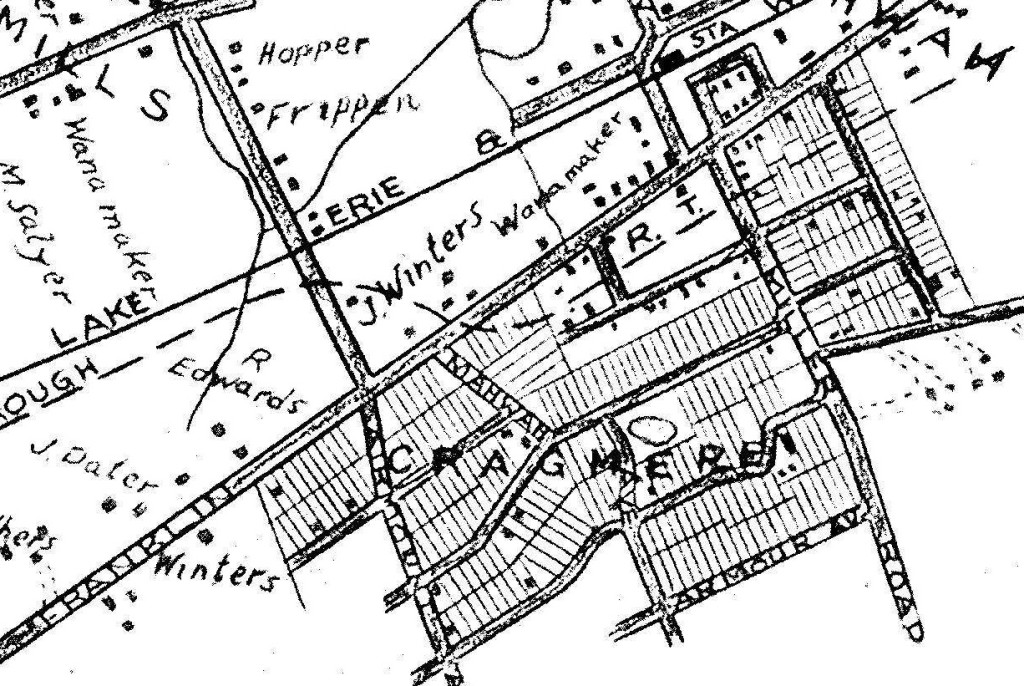Cragmere was everything that the townspeople of Mahwah knew was coming, and did not like it one bit. The new community was proposed by George Dunlop, head of the Mahwah Company. Dunlop, who had a bit of help from his silk magnate father, had made a considerable amount in that business before shifting his focus to other areas of business. In 1908, he snapped up 200 acres of land in Mahwah and began a plan to create a massive scale neighborhood in the eastern section of Hohokus Township: Cragmere. It was no mistake that Dunlop had secured this specific tract of land. The area was located just east of the Mahwah train station, and would be the future home to part of the North Jersey Rapid Transit Company’s trolley between Paterson and Suffern. This was no coincidence though because George Dunlop was a significant investor in the company, and in the same year which he bought the land on which Cragmere would soon break ground, he was named to the company’s board of directors. (Bischoff & Kahn, 259; Greene 235)

This selection from the 1913 Bromley Atlas of Bergen County shows Cragmere and its proximity to the Lake Erie Railroad, as well at the Interborough Trolley (R.T.) above Cragmere.
Just having the best location in the area would not sell the plots themselves though. For that task, Dunlop sought the services of a man who many thought could sell shampoo to a bald man; a superiorly blessed salesman called Leo Bugg. Bugg, working in New York City, pitched to the people of New York the ideal suburb before a hammer even touched a nail. (Bischoff & Kahn, 259) While the neighborhood started out as mainly seasonal residences for the homeowners, by the 1920s, Mahwah had grown out of its quaint, rural draw, and had swelled into a suburban, commuter community 30 miles west of New York City (Bischoff & Kahn, 288.)
The makeup of the residents of this area was highly varied. From blue-collar workers to affluent, upper-class socialites, Cragmere boasted a variety of families from a vast style of backgrounds. One of the most famous Cragmere residents was poet Joyce Kilmer. Kilmer’s poem, “Trees,” was written at their Airmount Road home, in the Cragmere section of Mahwah. The poet, who was killed in action during World War I, wrote the poem while looking out amongst the vast swaths of trees of the Ramapo Valley. While many towns had laid claim to being the location where Kilmer wrote the poem, it was confirmed in 2013 that the poem was actually about Mahwah.
